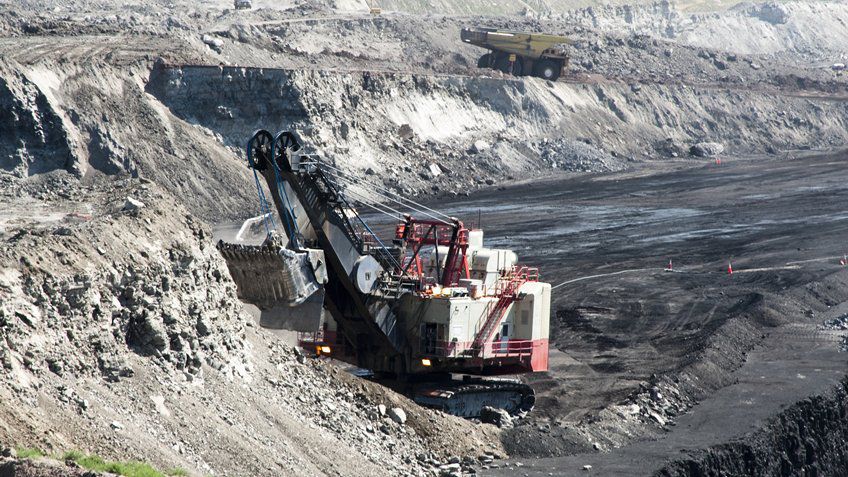Recommended For You
Solutions
- Allen-Bradley® PowerFlex® 7000 variable frequency drives installed to reduce energy consumption and improve uptime
- Allen-Bradley PowerMonitor power meters help monitor real-time energy usage and savings
Results
- Saved an estimated $3,000 per month by controlling motors with variable frequency drives
- Reduced maintenance costs compared to previous system
- Reduced energy consumption has resulted in a more sustainable mining operation
- Reduced noise by 15 decibels
- Reduced high heat and pressure
Background
Families and businesses across the Western plains rely on energy that originates from a coal mine in Wyoming. Every year the mine delivers roughly six million tons of coal by train to member utilities to generate electricity. This electricity heats homes, operates plants and keeps those must-have digital devices powered up.
That power begins with raw coal that's mined from the two separate surface mines by huge dragline excavators and then dropped into dump trucks. The trucks unload their black cargo into crushers that break it down into small pieces. From there, the crushed coal moves on to conveyor belts to storage silos. The conveyor network forms the “circulatory system” of the operation, delivering coal from the crushers to the prep-plant where it is washed and filtered. Then it moves to storage silos and soon after, to the rails cars. The conveyors are propelled by powerful motors that move the coal more than a 1,000 feet per minute.
Challenge
The original conveyor system was built in the early 1980s, and the equipment was far from optimal. The system consumed vast amounts of electricity, was unreliable and created a deafening noise, especially during hard stops and starts. When transporting 2,250 tons of coal an hour, 24 hours a day, the operation needs reliable equipment to ensure the people who depend on the coal get it when they need it. Reliability was becoming even more of a concern with the construction of an onsite utility plant that would depend on the smooth flow of coal.
To become more energy-efficient and reduce operating costs, the mine's team analyzed electrical usage. First, they scrutinized the equipment that drives conveyor belts. The hydraulic system used to operate the motors on the conveyor belts was mechanically based and therefore experienced lots of wear, driving up maintenance costs. The fluid-coupling device, part of the hydraulic system, was temperamental, and it caused a lot of downtime on the conveyor, along with being loud, unreliable and an energy hog. The high pressure and heat associated with the hydraulic system also presented safety risks to maintenance personnel. The engineering team knew the fluid-coupling device should go and that automation would be the critical player in delivering the solutions and the results desired.
Solutions
After evaluating options and talking to peers in the industry, the team chose to install Allen-Bradley® PowerFlex® 7000 variable frequency drives on the conveyor belts. Because variable frequency drives more accurately control motor speeds, they typically use less energy than hydraulic systems.
On conveyor belts, for example, variable frequency drives can reduce the current needed to start the motor from 650 percent of FLA typical of Direct On Line Starting, to 150 percent of FLA, typical of Current Limited VFD Starting – all without requiring a special rotor design. Meanwhile, the starting torque may be increased to approximately 150 percent of Full Load Torque. Using linear or S-ramp acceleration profiles, the belt can start without causing undue voltage sags, while the mechanical drive train, including gearboxes and the belt-tensioning systems, aren't exposed to the motor's breakdown torque. The speed control is infinitely variable and can be used to level load the belt. This helps mine operators ease motor startups or slow down the conveyor belt speed, for instance, when an issue in the pit disrupts coal delivery.
The drive installation process began at the beginning of the conveyor belt network. Since then, the drives have been added in stages to subsequent sections of the conveyor network, such as between the crusher and the prep-plant. Rockwell Automation also installed Allen-Bradley PowerMonitor™ devices so managers could track the mine's energy use in real time.
Results
The mine has realized benefits beyond expectations. Installing the new drives has significantly reduced the noise onsite and most importantly, the operation has less unplanned downtime. While mine operators haven't yet calculated improvement in downtime, the mine definitely is running more smoothly, with less downtime. Meanwhile the numbers on electric use are clear – the mine is saving about $3,000 per month. A side benefit of better conveyor control is that the mine is able to move the coal more efficiently and fill the rail cars more accurately.
When dealing with tons of coal, the mine can now be within plus or minus 100 pounds. As a result of the success, the team plans to install the variable frequency drives to the remaining conveyor belts to utilize the additional benefits throughout the mine.
Published March 29, 2016

